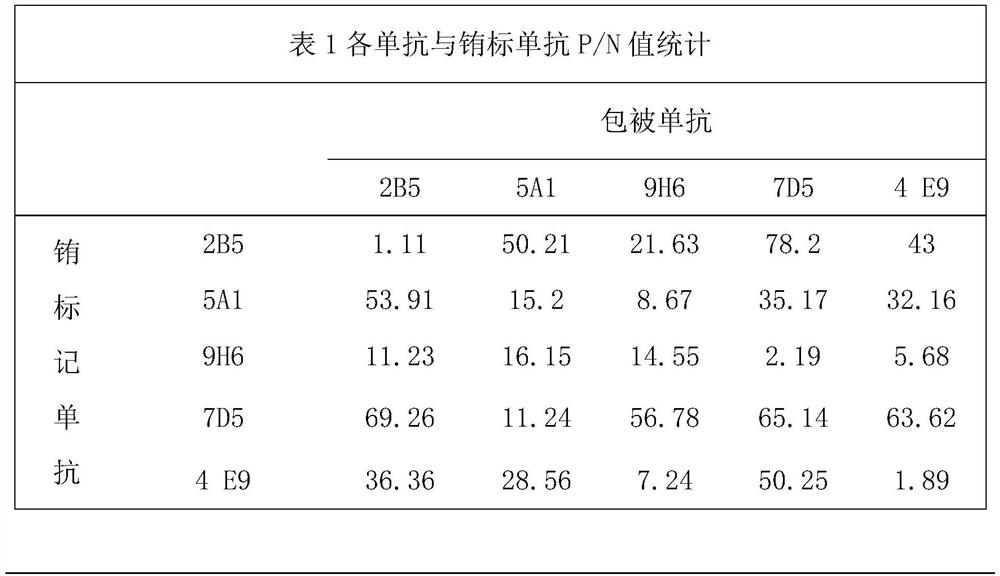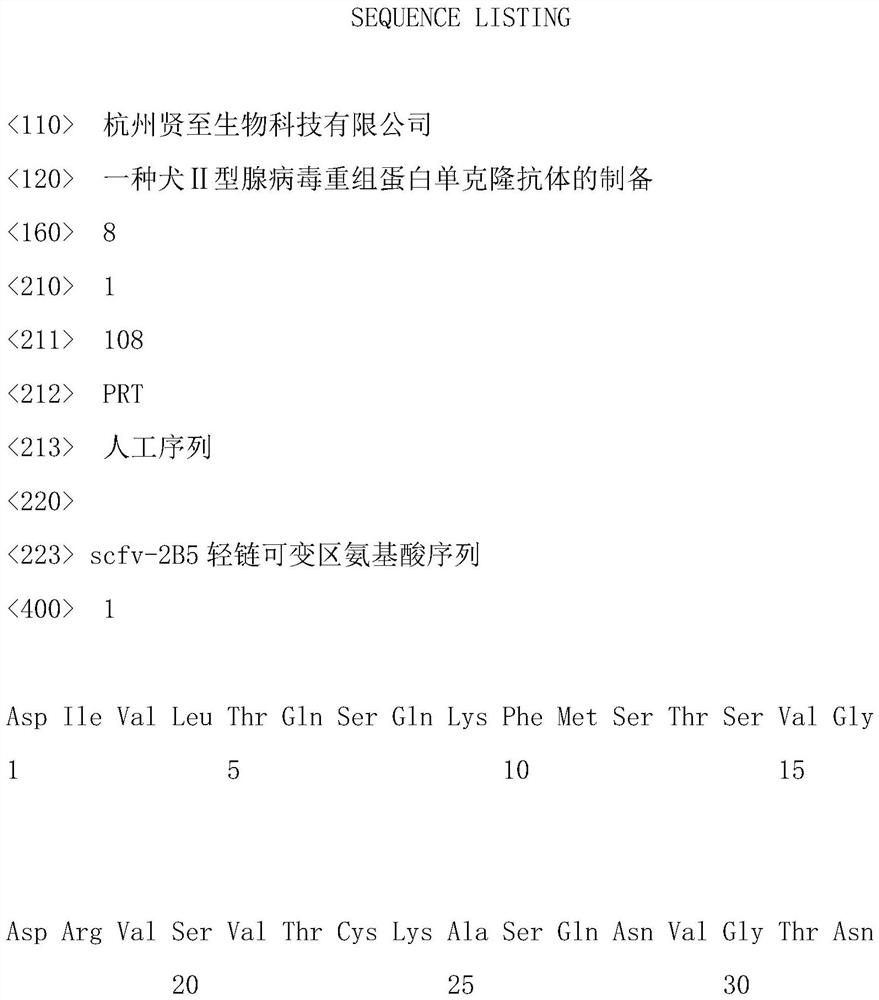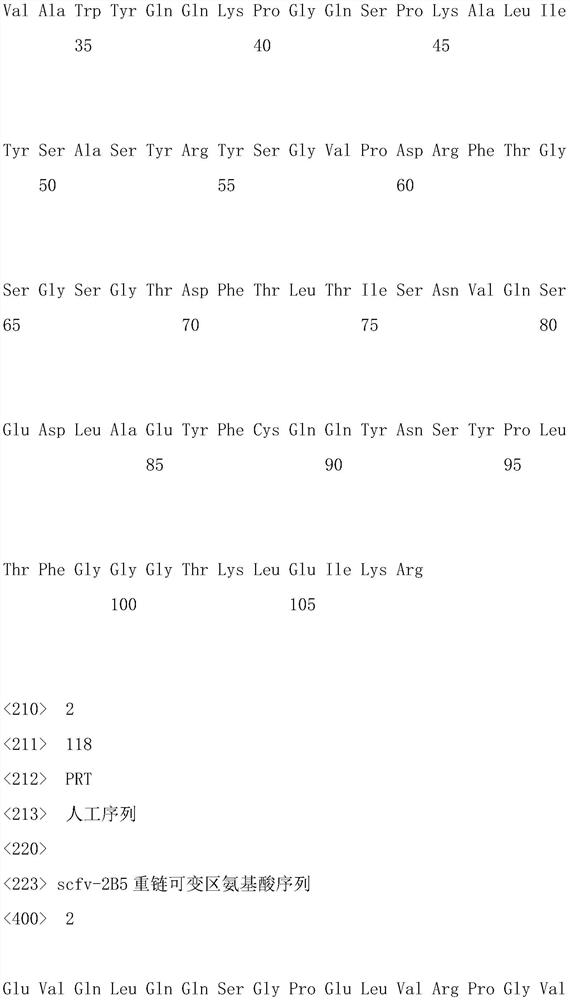Preparation of canine adenovirus II recombinant protein monoclonal antibody
An adenovirus and single-chain antibody technology, applied in the field of bioengineering, can solve the problems of large batch-to-batch variation, long monoclonal antibody cycle, and low purity
- Summary
- Abstract
- Description
- Claims
- Application Information
AI Technical Summary
Problems solved by technology
Method used
Image
Examples
Embodiment 1
[0008] Example 1: Selection of dominant antigenic epitopes of canine type Ⅱ adenovirus protein
[0009] Taking the canine type Ⅱ adenovirus protein as the target antigen, the hydrophilicity and antigenicity of the epitope sequence were analyzed by using the biological software DNAssist2.0, and the A-dominant epitope and the B-dominant epitope were selected. At the same time, the sequence comparison results showed that the selected two dominant antigenic epitopes A and B have high sequence specificity and no obvious homology with other protein sequences.
Embodiment 2
[0010] Example 2: Concatenation of dominant antigenic epitopes of canine type Ⅱ adenovirus protein
[0011] In order to enhance the stimulation of the selected antigenic epitope to the immune system of mice so as to facilitate subsequent experiments, the two dominant antigenic epitope sequences of A and B of the canine type II adenovirus protein were repeated respectively and passed through the flexible fragment (4 consecutive glycines). ) to obtain the amino acid sequence of the recombinant protein.
Embodiment 3
[0012] Embodiment 3: optimize the nucleotide sequence of coding recombinant protein
[0013] In order to increase the expression of recombinant protein in Escherichia coli, under the premise that the amino acid sequence of the recombinant protein remains unchanged, the amino acid sequence encoding the recombinant protein is converted into the corresponding nucleotide sequence according to the preferred codons of Escherichia coli, and the upstream and downstream The nucleotide sequences corresponding to the restriction sites BamHI and EcoRI were added respectively, which were synthesized by Hangzhou Xianzhi Biotechnology Co., Ltd. The synthesized target gene was cloned in the pMD19-T vector (Bao Bioengineering Dalian Co., Ltd.).
PUM
 Login to View More
Login to View More Abstract
Description
Claims
Application Information
 Login to View More
Login to View More - R&D
- Intellectual Property
- Life Sciences
- Materials
- Tech Scout
- Unparalleled Data Quality
- Higher Quality Content
- 60% Fewer Hallucinations
Browse by: Latest US Patents, China's latest patents, Technical Efficacy Thesaurus, Application Domain, Technology Topic, Popular Technical Reports.
© 2025 PatSnap. All rights reserved.Legal|Privacy policy|Modern Slavery Act Transparency Statement|Sitemap|About US| Contact US: help@patsnap.com



